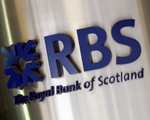Last week Royal Bank of Scotland announced it was winding down West Register in response to the “damaging perception that the bank had a conflict of interest”.
The division, which buys and manages direct real estate for the bank before selling it to maximise recovery, had been at the heart of allegations made in the Tomlinson report that the bank systematically defrauded customers.
So it made sense for the bank to announce the turnaround unit’s closure at the same time as Clifford Chance cleared the bank of these allegations (see below) – even if it wasn’t exactly a new strategy.
Those who paid close attention to a reorganisation of the bank’s property loan restructuring division in June last year will have seen the signs.
At that time RBS created the 75-strong Real Estate Asset Management arm within its Global Restructuring Group. GRG REAM comprises predominantly the old West Register team and was tasked with selling off West Register’s £3.7bn of assets.
What is still not clear is a strategy and timeframe for the sell-off. The reason for this, according to a source close to the bank, is so that the process “can respond to the market in an appropriate way”.
West Register has already been selling single buildings and sites, and last year it offloaded the £65m Project Sapphire portfolio. A portfolio sale or equity market exit has been mooted in the past for its 1,200 residential assets.
On timing, it is widely expected that the wind-down will tie in with the accelerated deleveraging being undertaken by RBS’s £38bn bad bank, RBS Capital Resolution.
This means three years at the longest, although 18 months is more likely, led by residential disposals.
However, one sceptical source says that RBS used the opportunity of the Clifford Chance findings to “spin” the wind-down of West Register, which was always the plan.
He also claims that the lack of strategy is due to “competing interests” on the assets from different divisions in the bank that are all “politicking for control”.
Around 75% of West Register assets are non-core, so form part of the book RCR is tasked with managing down, giving rise to the theory of internal power struggles.
This aside, the recovering market bodes well for a successful sell-off, so the bank might be able close down the 22-year-old West Register before the next downturn – when a new turnaround unit will need to be established.
Tomlinson fraud claims dismissed
An independent review of Lawrence Tomlinson’s central allegation that RBS was guilty of systematically setting out to defraud its small business customers was found to be without evidence by Clifford Chance.
The law firm interviewed 138 small business customers in GRG before publishing its conclusion last week.
The finding came six months after Tomlinson, entrepreneur in residence at the Department for Business, Innovation and Skills, made the allegations. His report claimed: “RBS has forced vibrant businesses into trouble, only to profit from their distress by squeezing them for exorbitant fees and seizing their assets.”
One main mechanism by which the bank was accused of engineering a default was through revaluations.
bridget.o’connell@estatesgazette.com











